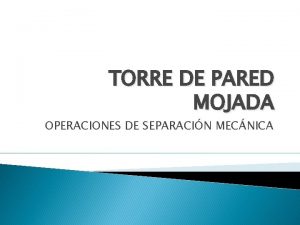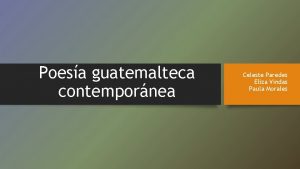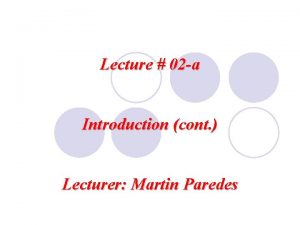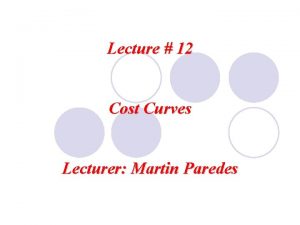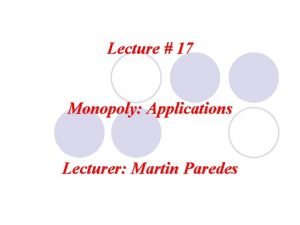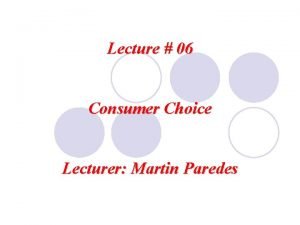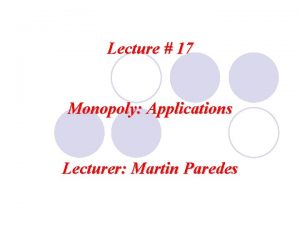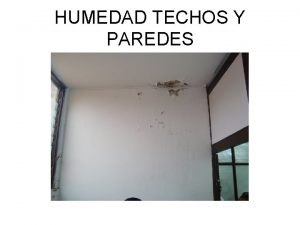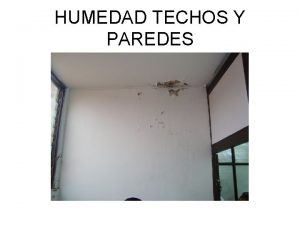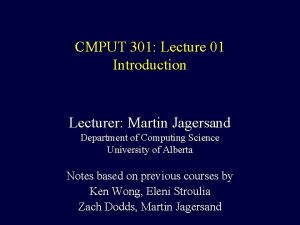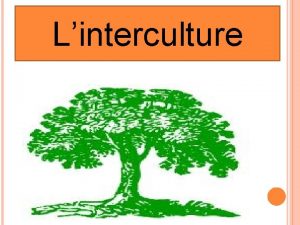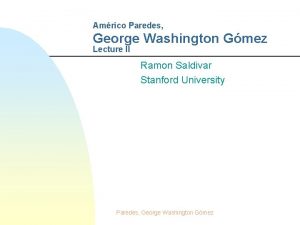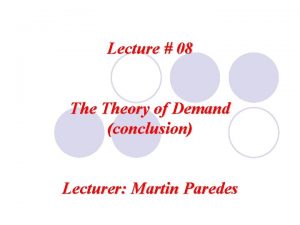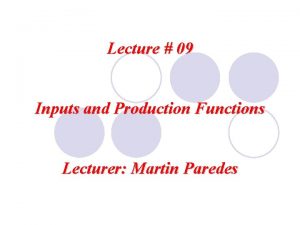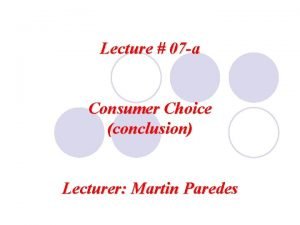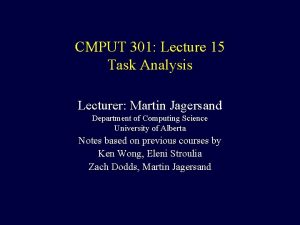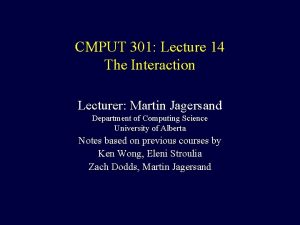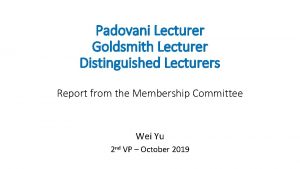Lecture 01 Introduction Lecturer Martin Paredes 1 1






















- Slides: 22

Lecture # 01 Introduction Lecturer: Martin Paredes 1

1. Definition of Microeconomics 2. Who Should Study Microeconomics? 3. Course Information 4. Microeconomic Modeling • Elements of models • Solving the models 2

• Microeconomics studies economic behavior of individual economic decision-makers • E. g. : consumers, workers, firms, managers. • This study involves: • • The behavior of these economic agents on their own The way their behavior interacts to form larger units, such as markets. 3

Example: The Railroad Industry in the US 74. 9% of all freight, 1929 39. 8% of all freight, 1970’s: poor profits, bankruptcies, inability to invest 1980’s: loosened regulation and union rules improved profitability 4

• Analysis of this issue requires Microeconomic tools. • Who are the actors who need to know something about Microeconomics? · · · Managers Union Leaders / Workers Lenders Policy Makers …and beyond! 5

l Main (required) textbook: David Besanko & Ronald Braeutigam, Microeconomics John Wiley & Sons, 2 nd Ed. , 2005. l Ancillaries: ¡ Study Guide ¡ APLIA: Online resources and problem sets. 6

l Alternative textbooks (“at your own risk”) B. Curtis Eaton, Diane Eaton, & Douglas Allen, Microeconomics: Theory With Applications, Prentice Hall, 6 th Edition, 2004. ¡ Robert Pyndick & Daniel Rubinfeld, Microeconomics Prentice Hall, 6 th Edition, 2005. ¡ Andrew Schotter, Microeconomics: a Modern Approach, Addison Wesley, 3 rd Edition, 2001. ¡ Hal Varian, Intermediate Microeconomics: a Modern Approach, W. W. Norton, 6 th Edition, 2006. ¡ 7

l Course Website: http: //www. tcd. ie/Economics/staff/paredesm/~EC 2010 8

l Lecture Meetings ¡ Tuesdays from 10: 00 AM to 11: 00 AM ¡ Wednesdays from 5: 00 PM to 6: 00 PM ¡ Location: Arts building, room 1008 l Lecture from January 9 th to be rescheduled after Reading Week 9

l Class Meetings 10

l Office Hours - Martin Paredes: ¡ Mondays from 3: 00 PM to 4: 00 PM ¡ Thursdays from 11: 30 AM to 12: 30 PM ¡ Office: Arts Building, room 3012 11

l Office Hours – Teaching Assistants: ¡ Marta Zieba: Mondays, 11: 00 AM to 1: 00 PM ¡ Padraig Flynn: Fridays, 10: 00 AM to 12: 00 PM ¡ Office: Arts Building, room 3002 12

l Course Assessment: Two Examinations. ¡ Hilary Term Test: 20% ¡ Final Exam: 60% l Several homeworks to be assigned during the semester on a weekly basis 13

l The Final Exam includes both Macro & Micro in equal proportions ¡ Five questions in Micro: One compulsory question l Answer two out of the remaining four. l ¡ Five questions in Macro: One compulsory question l Answer two out of the remaining four. l • Answer a total of 6 questions 14

1. 2. 3. 4. Introduction Ch. 1. Demand Supply Ch. 2. Consumer Theory Ch. 3, 4 & 5. Production and Cost Theory Ch. 6, 7 & 8. 15

5. Perfect Competition Ch. 9 & 10. 6. Monopoly Ch. 11 & 12. 7. Imperfect Competition, Game Theory and Strategic Behavior Ch. 13 & 14 8. Risk and Information Ch. 15 9. General Equilibrium Theory Ch. 16 10. Externalities and Public Goods Ch. 17 16

• Models are simplifications…like maps • Resemble reality • Understandable • Appropriate scale (not all details) 17

Price per pound Example: World-wide market for unprocessed coffee beans, December, 1997 Supply (P, W) Quantity, pounds 18

Price per pound Example: World-wide market for unprocessed coffee beans, December, 1997 Supply (P, W) Demand (P, I) Quantity, pounds 19

Elements of Models · Need to specify: · Choices/Alternatives · Assumptions 20

Definition: • Variables that have values that are taken as given in the analysis are exogenous variables. • Variables that have values that are determined as a result of the workings of the model are endogenous variables. 21

Definition: The Opportunity Cost of a resource is the value of that resource in its best alternative use. Example: € 100 K in facilities yields € 800 K in revenue € 100 K in R&D yields € 1 M revenue Opportunity cost of investing in facilities = € 1 M Opportunity cost if investing in R&D = € 800 K Note: Opportunity cost depends on how we specify alternatives. 22
 Lecturer's name
Lecturer's name 01:640:244 lecture notes - lecture 15: plat, idah, farad
01:640:244 lecture notes - lecture 15: plat, idah, farad Physician associate lecturer
Physician associate lecturer Spe distinguished lecturer
Spe distinguished lecturer Good afternoon my dear students
Good afternoon my dear students Photography lecturer
Photography lecturer Lecturer in charge
Lecturer in charge Designation lecturer
Designation lecturer Designation of lecturer
Designation of lecturer Why himalayan rivers are pernnial in nature
Why himalayan rivers are pernnial in nature Lecturer name
Lecturer name Pearson lecturer resources
Pearson lecturer resources Spe distinguished lecturer
Spe distinguished lecturer Lector vs lecturer
Lector vs lecturer Lecturer in charge
Lecturer in charge Cfa lecturer handbook
Cfa lecturer handbook Lecturer asad ali
Lecturer asad ali Dilatação termica
Dilatação termica Columna de pared mojada
Columna de pared mojada Porque tu crees que el tiempo cura y las paredes tapan
Porque tu crees que el tiempo cura y las paredes tapan Celeste paredes
Celeste paredes Gmail.com
Gmail.com Pared anterolateral abdomen
Pared anterolateral abdomen


















